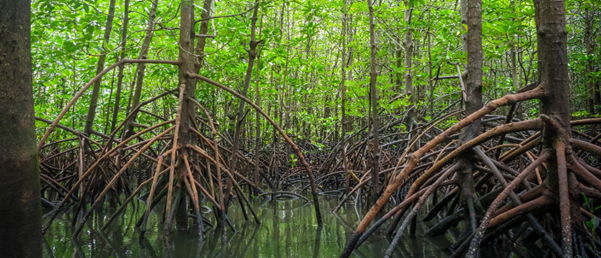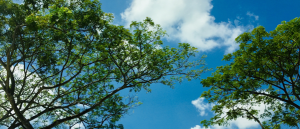
BioTechniques News
Aisha Al-Janabi

Scientists have optimized a protocol to achieve a higher quantity and quality of isolated RNA from mangrove root tissues rich in secondary metabolites.
The secondary metabolite content in mangrove roots can interfere with RNA extraction, making it unsuitable for downstream applications. In response, scientists from the Central University of Kerala (India) recently published an optimized method for isolating high-quality RNA from mangrove root tissue by modifying an existing RNA-isolation protocol.
Mangroves are a staple of shorelines across the globe and provide important environmental services to both humans and the natural environment, including the prevention of coastal erosion, sequestering carbon dioxide, and acting as habitats for a wide variety of species. Another iconic feature of mangroves is their ability to thrive in harsh intertidal zones.
As mangrove forests are in decline worldwide, the International Union for Conservation of Nature (IUCN; Gland, Switzerland) performed the first global assessment of mangroves’ conservation status, finding that one in six species is under threat of extinction. Understanding their adaptive mechanisms to saline coastal environments and differences in intra-species tolerance to intertidal environments under stress will help conservation planning. Transcriptomic data can be used to help understand the pathways related to stress tolerance by providing us with the gene-expression patterns of plants under stress.
 There’s something in the air: monitoring biodiversity with airborne eDNA
There’s something in the air: monitoring biodiversity with airborne eDNA
Researchers have discovered that existing air quality networks collect environmental DNA, which could help to monitor biodiversity globally.
Using currently available protocols, the quality and yield of RNA extracted from mangrove root tissue is compromised by secondary metabolites, which bind to, and form complexes with, proteins and RNA. This limits its application for cDNA synthesis, RT-PCR, next-generation sequencing, cloning and microarrays. Therefore, the team set out to create an optimized protocol that would result in a higher quantity and quality of isolated RNA from root tissue rich in secondary metabolites.
Two mangrove species with high secondary metabolite content were selected for this study; R. mucronata, which is a salt-secreting species that has yet to be the subject of a study investigating its small RNA expression and K. candel, which is a non-salt-secreting mangrove. Four RNA isolation methods were tested: a Nucleospin plant and fungi RNA isolation kit (Macharey-Nagel, Dueren, Germany), the CTAB-Phenol/Chloroform method, a modified CTAB-Chloroform/isoamyl alcohol method and the method that the team optimized, CTAB-LiCl.
The team utilized the following materials in their the method; proteinase K to degrade proteins, chloroform-isoamyl alcohol to avoid contamination with excess phenol, and sodium acetate to make the RNA less hydrophilic. Additionally, RNA precipitation was performed for an extended period to obtain a higher yield, resulting pellets were subjected to DNAaseI degradation, and precipitation steps were followed with an ethanol wash to minimize RNA loss.
In both mangrove species, the optimized method was successful in obtaining high-quality RNA suitable for downstream applications. The group considers the key steps for obtaining a high- yield and purity of RNA to be the use of; beta-mercaptoethanol to inhibit RNase activity, proteinase K to remove DNA contamination, lithium chloride and sodium acetate to precipitate the RNA, and chloroform-isoamyl alcohol to separate RNA.
Going forward, this method could help us identify the molecular mechanisms behind the growth, development, and stress tolerance of lesser explored plant species with high secondary metabolite concentrations, aiding in conservation planning.
The post Getting to the root of mangrove RNA isolation appeared first on BioTechniques.
Full BioTechniques Article here
Powered by WPeMatico
